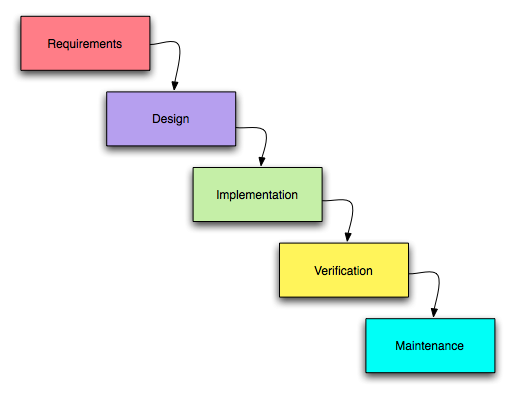
That is also when the developers go over the technical requirements of the project, such as the programming language they’ll be using, data layers, services, and so on.īefore this phase is complete, developers must have a concrete plan for translating the theoretical solutions into concrete specifications.
Waterfall project management phases software#
Once the project moves to the design phase, the team members take the solutions concocted in analysis and, if necessary, alter them to meet the hardware and software capabilities of the system. This step usually involves brainstorming both logical and theoretical design solutions. In the second stage, the developers rely on the requirements document to analyze the system and flesh out the models and business logic they’ll use to design the application. However, what the document does not do is define how the application should do it. That prompts the creation of the requirements document, which details everything that the application should be able to do, as well as the necessary features. Once gathered, the requirements must be thoroughly analyzed and properly documented. That allows the organization to plan and map out the entire project, without any further involvement from the client. Requirement Gatheringīefore any work on the project can begin, it is absolutely necessary to gather all the requirements from the customer and/or stakeholders. It employs a step-by-step approach and typically breaks down the project into the following stages: 1. The Waterfall model method is rather straightforward. Throughout this article, we’ll explain how the Waterfall model functions, what its advantages and drawbacks are, and when it is best to utilize this methodology.ĭespite the fact that many industries can leverage the Waterfall model, we will be discussing it in the context of a software development process. That was mainly due to its logical sequencing, which made it remarkably easy to understand and implement.Īlthough Waterfall’s popularity has waned over the years (and with the rise of Agile project management), it still remains relevant to this day. Īlthough engineered for software development, Waterfall project management was quickly picked up by other industries.

This project management methodology was first introduced in 1970, in a paper published by Winston W. The graphic representation of the Waterfall methodology closely resembles cascading steps of a waterfall, hence the name. Waterfall projects start by gathering all the requirements and are executed through a sequential project plan designed to accommodate those requirements. Put simply: the previous phase of the project must be completed before moving on to the next.


It emphasizes logical sequencing throughout the software development life cycle (SDLC). The Waterfall methodology is a linear approach to project management. Waterfall Methodology in Project Management


 0 kommentar(er)
0 kommentar(er)
